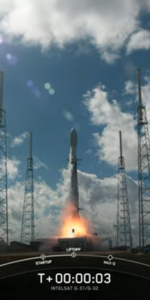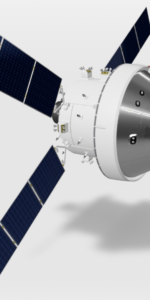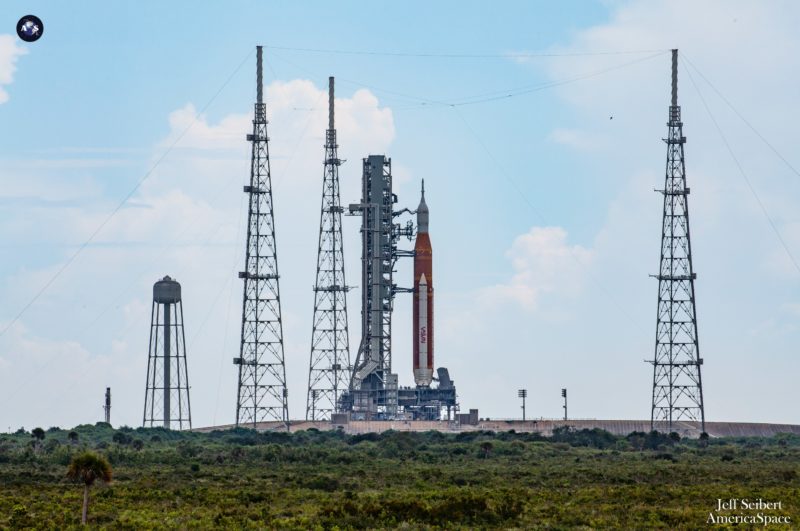
On Friday, November 11th, NASA Associate Administrator for Exploration Systems Development Mission Directorate Jim Free held a media event to provide an update on how the Artemis launch vehicle weathered Hurricane Nicole. On the evening of Sunday, November 13th, the Artemis I mission management team met to follow-up on the status of the Artemis 1 vehicle and concluded by giving a “go” for launch in the early hours of Wednesday, November 16.
Effects of Hurricane Nicole on the Artemis 1 Vehicle
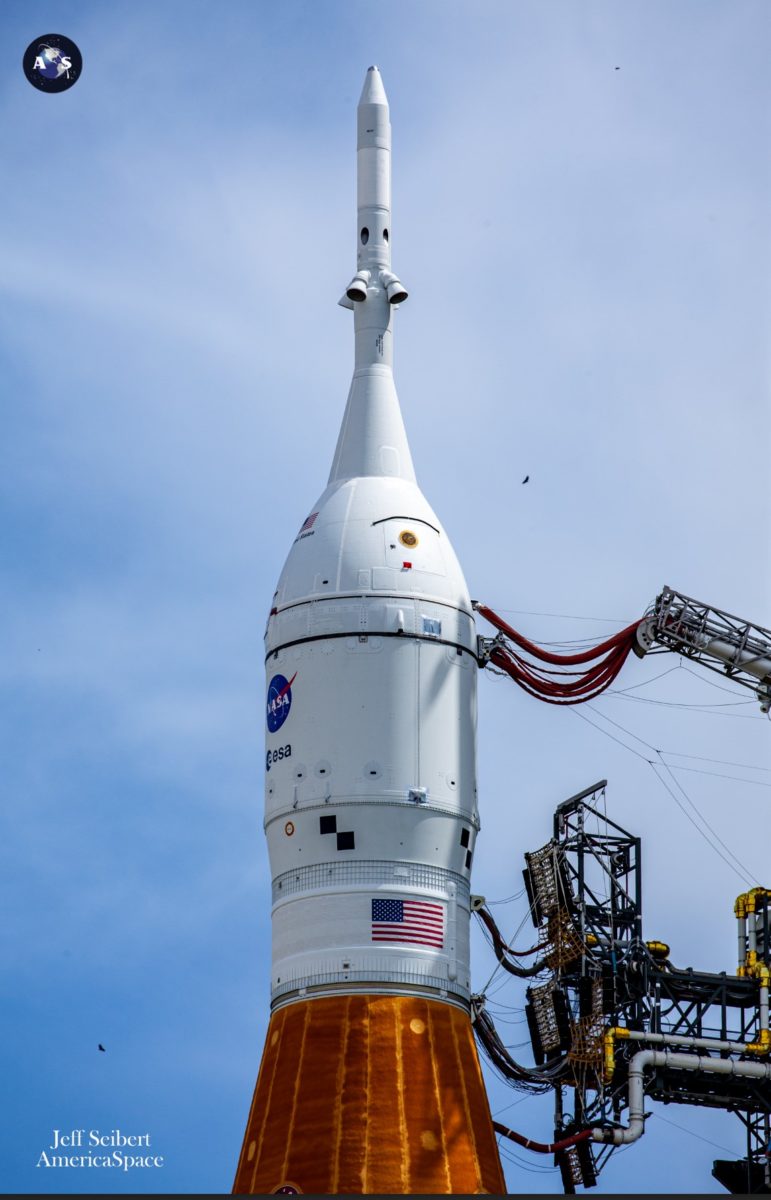
Weather damage due to Hurricane Nicole to the Orion spacecraft was minimal. In essence, some weather stripping was partly torn-off, a purge umbilical to the Orion spacecraft was blown out of its holding tray, and some water got into the crew access arm.
A piece of RTV, or room temperature vulcanizing, silicon rubber weather stripping on the Orion LAS (launch abort system), where the ogive on Orion’s LAS meets the crew module adapter, came lose. One solution to fix this is to have a technician on the Orion access arm lean over and, as Assoc. Admin. Jim Free said, “…snip it off.” The Artemis 1 mission management team will meet on the afternoon of Monday, November 14th, to determine what to do regarding the dislocated stripping.
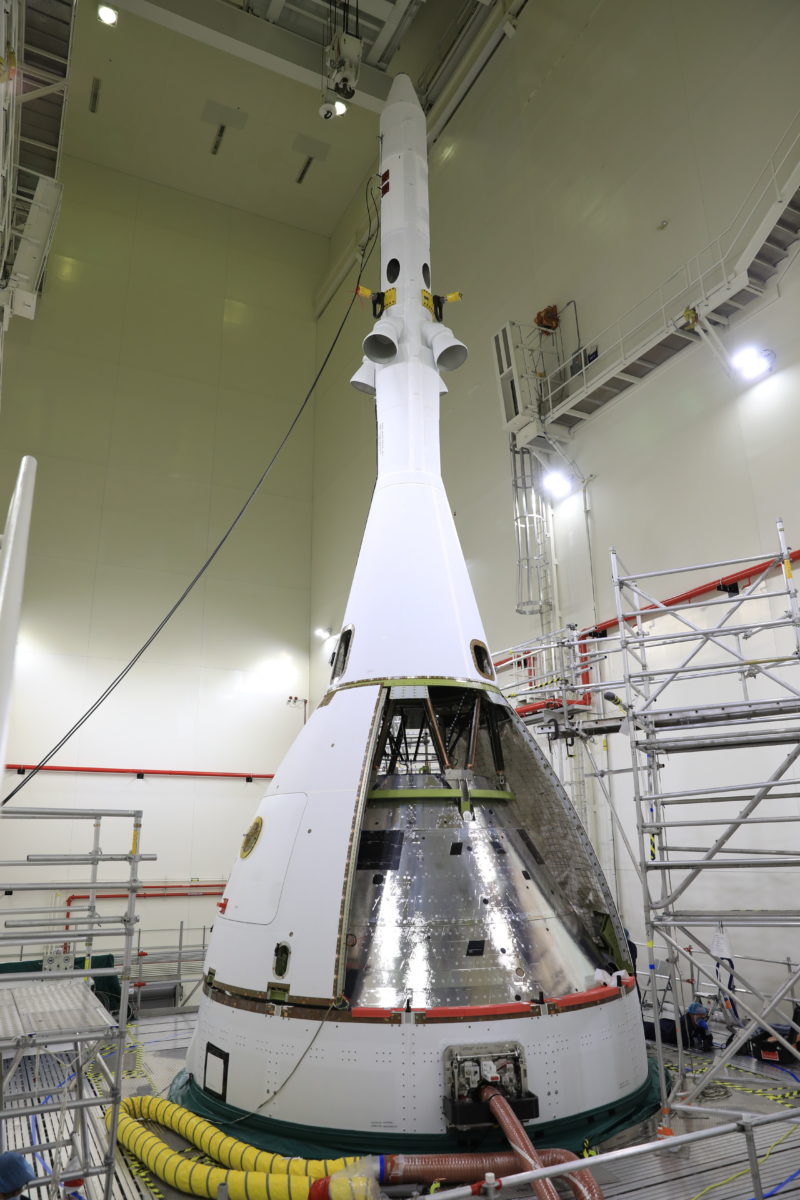
An umbilical line to Orion, for circulating air to maintain a good humidity, came off the tray that it sat in. The umbilical has since been put back into its tray. The umbilical never came lose as its purge functions, which were being continuously monitored, continued uninterrupted during hurricane Nicole.
The Orion Crew Access Arm got a little water in it, which has since been cleaned up.
That’s is the sum total of the effects of Hurricane Nicole on the Orion spacecraft.
As minimal as the damage cause by Nicole on the Orion spacecraft was, there was even less damage to the SLS launch vehicle that will send Orion to the Moon.
A water cover on one of the RS-25 engines was torn but will be fixed.
There are several purge lines that feed into the SLS launch vehicle. As with the Orion spacecraft, purge activities of the SLS vehicle were monitored during Hurricane Nicole. There were no interruptions during the storm.
At the tail service mast, at the base of the SLS vehicle, an electrical cable on the LH2 (liquid hydrogen) tail service mast was giving some off-nominal electrical signals. After reseating and then replacing the cable to the connector, engineers continue to see off-nominal electrical signals. So tonight, Sunday night, a component of an electrical connector on the hydrogen tail service mast umbilical ground-side plate will be replaced. NASA has stated that should replacing the connector not remedy the faulty signals, engineers have redundant sources of information provided through the cable and this issue will not hold-up the Artemis 1 countdown.
Regarding the tail mast 4″ and 8″ LH2 umbilical lines and the QD’s (quick-disconnects) that interface those lines at the base of the launch vehicle, wind speed remained below certification limits of the LOX and LH2 QD’s. The LH2 and LOX interfaces at the tail mast look good, according to Assoc. Administrator Free.
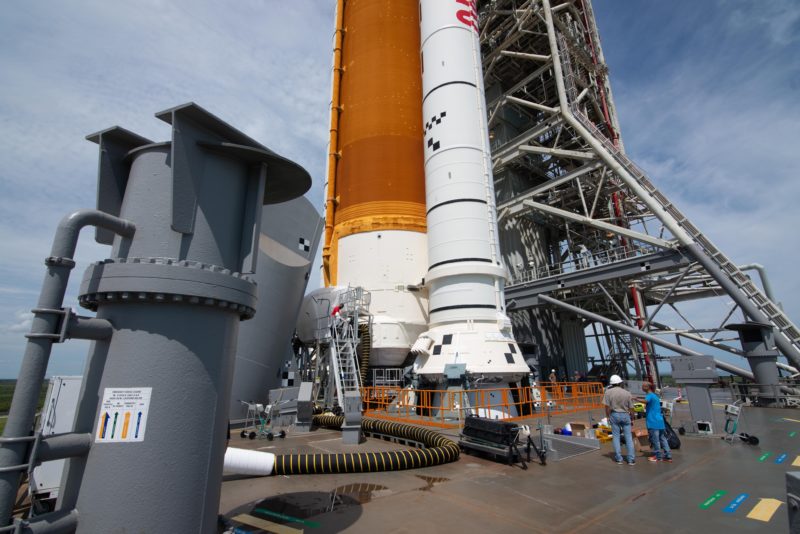
The Wind Speed Question
A great deal of noise was made by a few outlets that the wind speeds due to Hurricane Nicole exceeded the designed limits of the Artemis 1 launch vehicle. Assoc. Administrator Free tried to clarify for all that NASA’s stated wind speed limit for the Artemis launch vehicle of 74 knots wind speed is for 60′ of height, not the whole height of the vehicle. He noted that wind speed increases the further one goes up due to decreased drag induced by the ground and by turbulence from layers below. The Artemis vehicle was designed to handle higher wind speeds at higher locations on the vehicle.
To capture the wind speeds during Hurricane Nicole, NASA placed a portable anemometer (wind speed gauge) at 55′ level on mobile launch tower. Wind speed at the 132′ level was also measured. Streamers were put out on the vehicle to measure wind direction during the storm and monitored with cameras. Wind measurements were also taken at the top of lighting towers at the 457’ level.
The 60’ height for referencing wind speed data has been used over the years, including the Shuttle era. The difference between 55’, where NASA placed the portable anemometer, and 60’ isn’t deemed material.
In addition to monitoring wind speed at the 55′, 132′, and 457′ levels, loads on the Artemis 1 vehicle were monitored on the eight support posts–there are four for each solid rocket booster–that are at the base of the mobile launch platform, and the vehicle stabilizer, which is about 2/3 of the way up the launch vehicle.
Assoc. Administrator Free made clear that at no time during Hurricane Nicole did wind speeds exceed the certification limits of the Artemis 1 launch vehicle. Wind speed and loads at vehicle stabilizer were never exceeded and remained within certification during Hurricane Nicole.
Assoc. Administrator Free took some time to clarify that the stated wind limit for the Flight Readiness Cycle is 75% of the wind limit, leaving another 25%. So even if the wind speed at 55′ had been 74 knots, there was another 25% of margin left. Furthermore, Free stated that above that is the factor of safety, which is 1.4.
At another point, Assoc. Administrator Free mentioned that one of the side-effects of designing a vehicle over a 10 year period is that you have time to build-in a lot of margin, in this case wind speed, but also leaving one to wonder whether those margins are too conservative. He noted that conservative design margins increase cost, so it’s common to wonder if those margins shouldn’t be relaxed. He concluded this point by noting that he was glad for the wind speed margins of the launch vehicle.
Going forward, according to NASA, the two-hour window for launch opens at 1:04 AM EST Wednesday and the countdown clock will start-up at 1:54 AM Monday.




